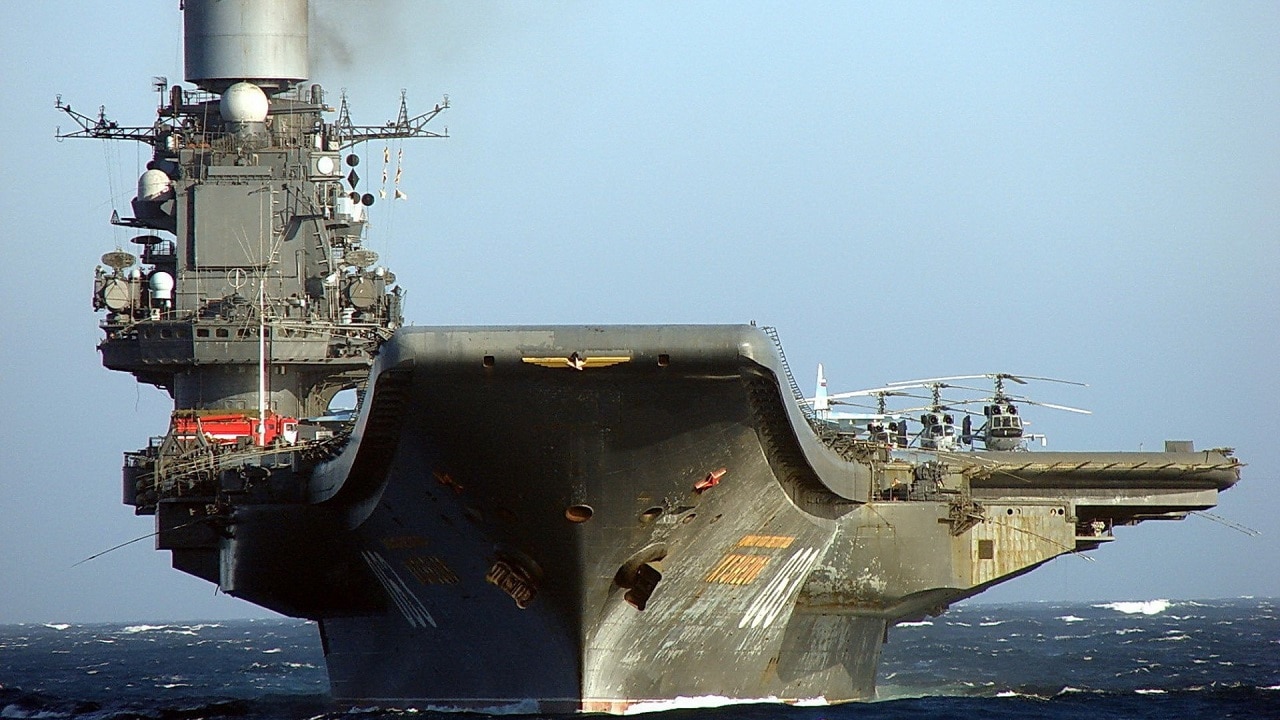Russia’s Navy was poorly positioned to assert itself as a major global force years before its war with Ukraine.
Developments since the Kremlin began its invasion, would suggest this is even more true now.
For Putin, it seems the Russian Navy does indeed look like a ‘sinking ship’ in every sense of the word.
Ukraine Holds Strong Against Naval Attack
Ukraine has demonstrated an ability to target and destroy Russian surface ships from the coastline, and beyond an initial amphibious incursion into Odesa, the Russian Navy has not presented Ukraine with any kind of serious naval threat.
While some might wonder just how much Russia can rebuild its Navy following the war with Ukraine, the Russian Navy was not much of a threat to begin with. This challenge is not only complicated by the many problems associated with Russia’s damaged and now docked single aircraft carrier, but also evidenced in its inability to project power into Ukraine from the ocean in any impactful way.
Despite this reality, there are nevertheless still several significant threats presented by the Russian Navy, including its growing fleet of technologically advanced submarines and the emerging ability of its surface warships to fire hypersonic weapons. For example, the Russian Navy is up gunning, modernizing, and revamping some of its massive, yet somewhat antiquated Cold War-era battle cruisers by adding advanced interceptor missiles, close-in ship defenses, upgraded ship-integrated longer-range air defenses, and even hypersonic weapons. Should Russia truly be arming its upgraded 1980s battle cruiser, the Admiral Nakhimov, with up to 60 hypersonic missiles, then many NATO countries and the U.S. could face a massive and potentially unparalleled threat.
Russian Naval Threat Beyond Ukraine
Arming a battle cruiser with hypersonic missiles would be a substantial step forward when it comes to changing and upgrading the offensive firepower of the 1980s-era Russian battlecruiser Admiral Nakhimov. An interesting article in Forbes magazine says the Russian ship is “almost as large as the Iowa-class” battlecruisers and would well become the “most powerful surface combatant in the world.”
What might make it so powerful? Depending upon the scope of the upgrades, and particularly the extent to which they increasingly incorporate high-speed computer processing, long-range sensor networking, and new “fire control.” Should these systems be brought into the modern era, then an upgraded heavily armed ship would indeed present a massive threat to U.S. and NATO forces.
The Admiral Nakhimov is being upgraded with a number of weapons such as Russia’s S-300 type anti-aircraft defenses, land-attack missiles, AK 192 guns, close-in defenses, and new anti-submarine weapons.
Upgrade or Scrap?
The large Russian battlecruiser is also armed with a host of additional weapons, according to the Forbes report, which says the Admiral Nakhimov’s “carrier killer” missiles include 20 large Granite supersonic missiles.
The ship is also armed with 40 9K33 Osa short-range missiles and as many as 96 S-300 long-range missiles. Also of significant importance, the ship is armed with a Kashtan close-in weapons system, armed with Gatling guns and eight 9M322 short-range missiles.
Could the Russian battlecruisers be upgraded long-range missile rival the U.S. Tomahawks?
Is the Russian close-in weapons system (CIWS) comparable to the U.S. Navy’s upgraded weapons, which fire a Phalanx close-in weapon to take out incoming small boats, drones, explosives, or other kinds of close-in threats? As part of an integrated system of defenses, many Navy ships are also armed with deck-launched interceptor missiles for medium to short-range attacks, such as SeaRAM and Rolling Airframe Missiles.
Finally, both a U.S. Navy destroyer and an upgraded Russian battlecruiser would operate with drones and helicopters able to conduct reconnaissance, hunt submarines, and even lead forward attacks on the ocean.
While a navy destroyer would be smaller than a large, modernized Russian battlecruiser, its high-tech weaponry may give it a distinct advantage in any kind of open or “blue-water” maritime warfare engagement. This would likely depend upon the performance and relative technological capacity of the upgraded weapons.
The U.S. has been massively upgrading Tomahawks, SM-6 missiles, CIWS, and SeaRAMs with extended range, an ability to hit moving targets at sea, and the new generation of guidance systems. Clearly, it would be critical to have an understanding of the state of relative sophistication of these Russian weapons and, perhaps to an even more significant degree, how well are they networked with other ships, drones, or even submarines coming to the surface for networked connectivity.
Kris Osborn is the Military Affairs Editor of 19FortyFive and President of Warrior Maven – Center for Military Modernization. Osborn previously served at the Pentagon as a Highly Qualified Expert with the Office of the Assistant Secretary of the Army—Acquisition, Logistics & Technology. Osborn has also worked as an anchor and on-air military specialist at national TV networks. He has appeared as a guest military expert on Fox News, MSNBC, The Military Channel, and The History Channel. He also has a Masters Degree in Comparative Literature from Columbia University.

